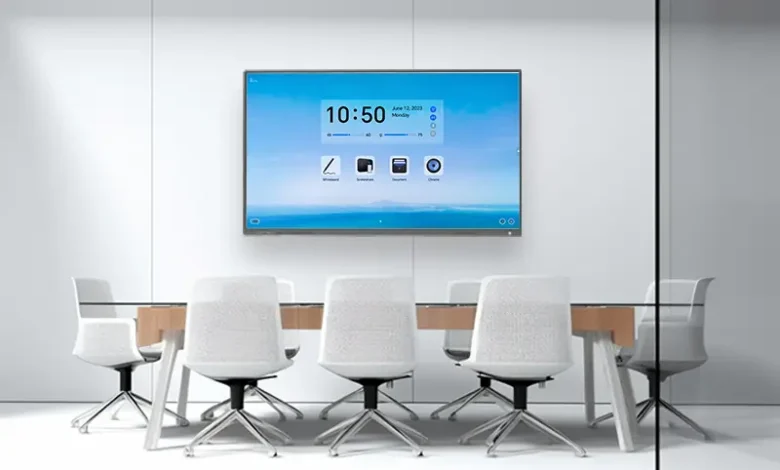Revolutionizing Learning and Collaboration: The Impact of Interactive Flat Panel Displays

Introduction
In recent years, the technological landscape has undergone significant transformations, bringing forth tools that have reshaped various sectors. One such innovation is the interactive flat panel display (IFPD), a device that has revolutionized both educational and corporate environments. These displays are not just large screens; they are sophisticated, interactive systems that facilitate dynamic learning and collaborative work. This article delves into the multifaceted world of IFPDs, exploring their features, benefits, and the profound impact they have on modern education and business.
Understanding Interactive Flat Panel Displays
Interactive flat panel displays are advanced screens that allow users to interact directly with the content displayed. Unlike traditional whiteboards or projectors, IFPDs offer a touch-sensitive surface that supports multi-touch input, enabling multiple users to engage simultaneously. These displays are equipped with high-resolution screens, often exceeding 4K, ensuring clear and vibrant visuals. They also come with integrated software that supports a range of applications, from simple note-taking to complex data analysis.
Key Features of Interactive Flat Panel Displays
Touch and Gesture Recognition: One of the standout features of IFPDs is their ability to recognize multiple touch points and gestures. This capability allows users to manipulate content effortlessly, whether they are zooming in on an image, rotating a 3D model, or annotating a document.
High-Resolution Displays: With resolutions often surpassing 4K, IFPDs provide crisp and clear visuals. This high level of detail is crucial in settings where visual clarity is paramount, such as medical imaging, architectural presentations, and detailed graphical work.
Integrated Software: IFPDs come with a variety of pre-installed applications designed to enhance productivity and collaboration. These applications range from simple whiteboard tools to sophisticated software for brainstorming, project management, and video conferencing.
Connectivity Options: Modern IFPDs offer a plethora of connectivity options, including HDMI, USB, and wireless connections. This flexibility ensures that users can easily integrate the display with other devices, such as laptops, tablets, and smartphones.
Audio and Visual Enhancements: Many IFPDs are equipped with built-in speakers and microphones, providing an all-in-one solution for audio-visual presentations and video conferencing. Some models also include cameras, making them ideal for remote collaboration.
The Educational Impact of Interactive Flat Panel Displays
The integration of IFPDs in educational settings has brought about a paradigm shift in teaching and learning methodologies. These displays have become central to creating interactive and engaging learning environments.
Enhanced Student Engagement: Traditional lecture-based teaching methods often result in passive learning. IFPDs, on the other hand, encourage active participation. Students can interact directly with the display, solving problems, conducting experiments, and collaborating with peers in real-time.
Dynamic Content Delivery: Teachers can leverage the multimedia capabilities of IFPDs to deliver content in diverse formats. Videos, animations, and interactive simulations can be seamlessly integrated into lessons, catering to different learning styles and making complex concepts easier to understand.
Collaborative Learning: IFPDs facilitate collaborative learning by allowing multiple students to work on the display simultaneously. Group projects, brainstorming sessions, and peer reviews become more dynamic and interactive, fostering a collaborative spirit among students.
Accessibility and Inclusivity: IFPDs support various accessibility features, such as screen readers and magnification tools, making learning more inclusive for students with disabilities. Additionally, the ability to adjust font sizes, colors, and contrast can help accommodate students with visual impairments.
Real-Time Feedback and Assessment: Teachers can use IFPDs to conduct real-time assessments and provide immediate feedback. Quizzes, polls, and interactive exercises can be integrated into lessons, allowing teachers to gauge student understanding and adjust their teaching strategies accordingly.
Transforming Corporate Environments with Interactive Flat Panel Displays
Beyond education, IFPDs have made significant inroads into the corporate world, transforming how businesses operate and collaborate.
Enhanced Meetings and Presentations: IFPDs elevate the quality of meetings and presentations. Presenters can interact directly with the content, annotate slides, and make real-time adjustments. This interactivity makes presentations more engaging and helps keep the audience’s attention.
Improved Collaboration: In today’s globalized business environment, collaboration often involves teams spread across different locations. IFPDs, with their video conferencing capabilities and real-time collaboration tools, bridge the gap between remote teams, fostering better communication and teamwork.
Streamlined Workflow: IFPDs can integrate with various business applications and tools, streamlining workflows and improving productivity. From project management software to data analytics tools, the ability to access and manipulate information directly on the display enhances efficiency.
Training and Development: Corporate training sessions benefit significantly from the use of IFPDs. Trainers can deliver interactive and multimedia-rich content, conduct real-time assessments, and provide immediate feedback. This approach leads to more effective training outcomes and better retention of information.
Customer Engagement: In customer-facing environments, such as retail stores and showrooms, IFPDs can be used to create interactive and immersive experiences. Customers can explore products, access information, and interact with content in a more engaging manner, enhancing their overall experience.
The Technological Backbone of Interactive Flat Panel Displays
The impressive functionality of IFPDs is supported by a robust technological framework. Several key technologies work in tandem to deliver the seamless interactive experience that users expect.
Touch Technology: The core of any IFPD is its touch technology. Capacitive touch, infrared touch, and optical touch are among the most common technologies used. Each has its advantages, with capacitive touch offering high sensitivity and precision, infrared touch providing durability and multi-touch support, and optical touch being cost-effective and easy to maintain.
Display Technology: The quality of the display is critical for an IFPD’s effectiveness. LED and OLED panels are commonly used due to their superior color accuracy, brightness, and energy efficiency. These technologies ensure that visuals are vibrant and clear, even in well-lit environments.
Processing Power: To handle the complex tasks associated with interactivity, IFPDs are equipped with powerful processors. These processors enable smooth multitasking, quick response times, and the ability to run demanding applications without lag.
Operating Systems and Software: Most IFPDs run on customized versions of popular operating systems like Android, Windows, or proprietary systems. These operating systems are optimized for touch input and come with a suite of applications designed to maximize the display’s capabilities.
Connectivity and Integration: The ability to connect and integrate with other devices and networks is crucial for IFPDs. Wi-Fi, Bluetooth, and various wired connections ensure that users can easily share content, collaborate, and integrate the display into their existing IT infrastructure.
Challenges and Considerations
While the benefits of IFPDs are substantial, there are several challenges and considerations that organizations must address when implementing these systems.
Cost: High-quality IFPDs can be expensive, particularly for larger sizes and advanced models. Organizations must weigh the benefits against the initial investment and ongoing maintenance costs.
Training and Adaptation: Introducing IFPDs requires training for users to fully utilize their features. Both educators and corporate employees may need time to adapt to the new technology and integrate it into their workflows effectively.
Technical Support and Maintenance: Like any advanced technology, IFPDs require regular maintenance and technical support. Organizations need to ensure they have the necessary infrastructure to address any technical issues promptly.
Security Concerns: With increased connectivity comes the risk of security vulnerabilities. Organizations must implement robust security measures to protect sensitive information and ensure the integrity of their systems.
Compatibility Issues: Ensuring compatibility with existing hardware and software can be challenging. Organizations must carefully evaluate their current infrastructure and make necessary adjustments to seamlessly integrate IFPDs.
The Future of Interactive Flat Panel Displays
The future of IFPDs looks promising, with continuous advancements in technology set to further enhance their capabilities. Several trends are likely to shape the evolution of these displays in the coming years.
Artificial Intelligence and Machine Learning: Integrating AI and machine learning into IFPDs will enable more intuitive and personalized interactions. These technologies can analyze user behavior and preferences, adapting the display’s functionality to meet individual needs.
Augmented Reality (AR) and Virtual Reality (VR): The incorporation of AR and VR technologies into IFPDs will open up new possibilities for immersive learning and collaboration. Users will be able to interact with 3D models, simulations, and virtual environments, enhancing their understanding and engagement.
Improved Touch and Gesture Recognition: Advances in touch and gesture recognition will make interactions with IFPDs even more seamless and natural. This progress will enable more precise and responsive touch input, enhancing the overall user experience.
Enhanced Connectivity and Integration: As the Internet of Things (IoT) continues to expand, IFPDs will become more integrated with other smart devices and systems. This connectivity will enable more efficient and interconnected workflows, improving productivity and collaboration.
Sustainability and Energy Efficiency: Future IFPDs will likely focus on sustainability, with manufacturers striving to create more energy-efficient and eco-friendly displays. This emphasis on sustainability will align with global efforts to reduce carbon footprints and promote environmental responsibility.
Conclusion
Interactive flat panel displays have undeniably transformed the landscapes of education and business, offering a dynamic and interactive approach to learning and collaboration. With their advanced features and capabilities, IFPDs have made classrooms more engaging, meetings more productive, and collaborations more effective. As technology continues to evolve, these displays will undoubtedly become even more integral to our daily lives, driving innovation and enhancing the way we interact with digital content.




